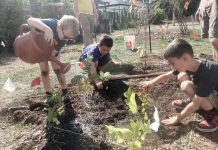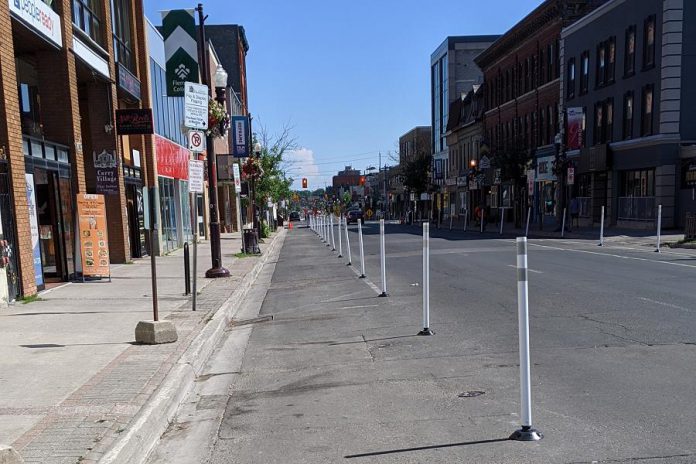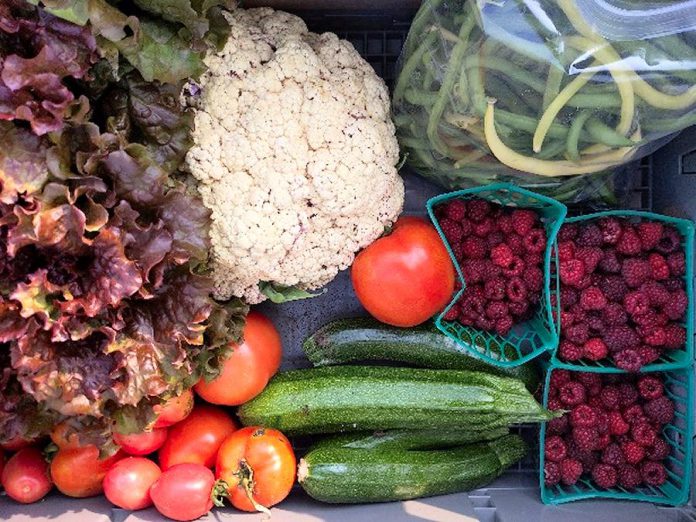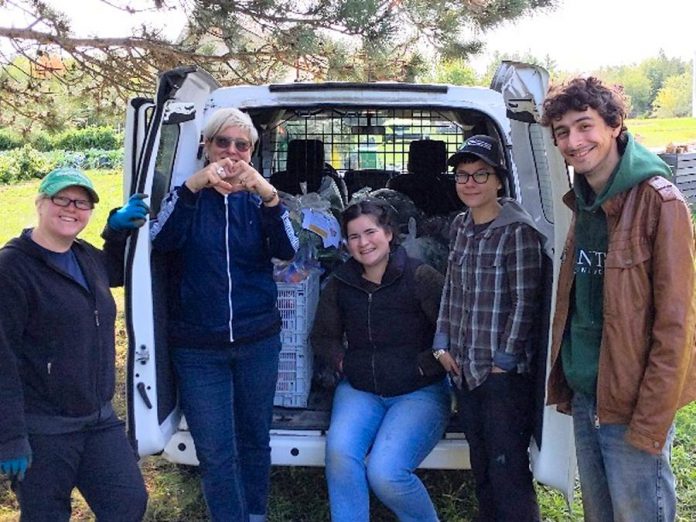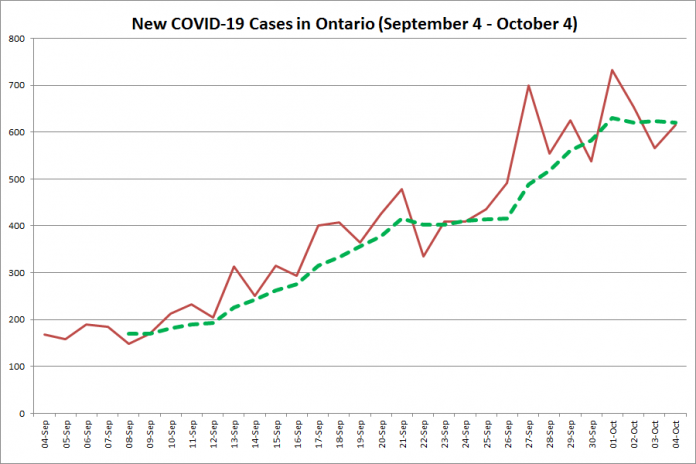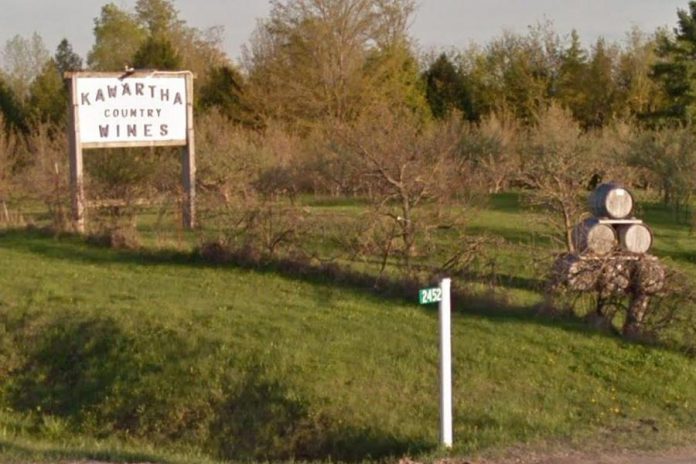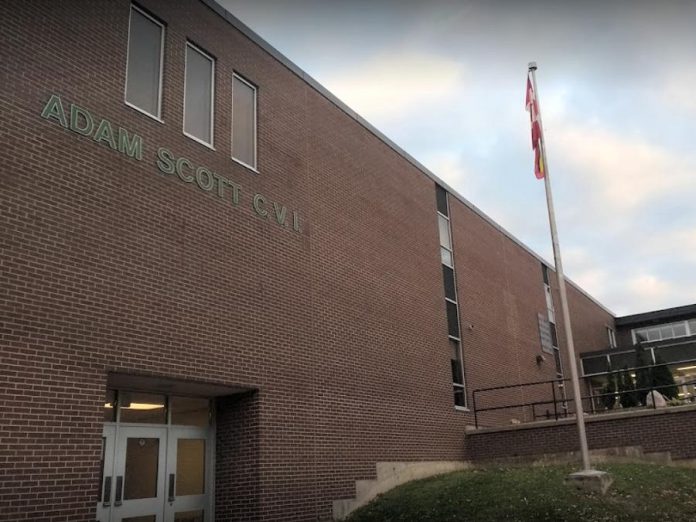Here’s an update on COVID-19 cases in Ontario as well as in the greater Kawarthas region.
Today, Ontario is reporting 548 new cases of COVID-19. Most of the new cases are in Toronto (201), Peel (90), Ottawa (62), and York (56), with smaller increases in Halton (30), Waterloo (21), Niagara (17), Hamilton (15), Eastern Ontario Health Unit (13), Durham (12), Simcoe Muskoka (10), and Kingston, Frontenac and Lennox & Addington (6). The remaining 22 public health units are reporting 5 or fewer cases, with 13 reporting no cases at all.
Of today’s cases, 61% are among people under the age of 40. The positivity rate remains unchanged at 1.8%. This means that 1.8% of the tests that were performed on October 5 were positive for COVID-19. With 546 more resolved cases, the percentage of resolved cases has climbed by 0.1% to 84.7%.
Although an additional 16 people have been hospitalized since yesterday, for a total of 192, but there are 2 fewer cases in ICUs and no change in ventilated patients. The backlog of tests under investigation has decreased by 12,523 since yesterday and now stands at 55,483.
The number of new cases in Ontario schools has increased by 18, and now stands at 74 (41 students, 10 staff, and 23 unidentified individuals). Cases in licensed child care settings has also increased slightly, with 17 new cases (12 children and 5 staff).
In the greater Kawarthas region, there is 1 new case to report in Haliburton. There are no new cases in Peterborough, Kawartha Lakes, Northumberland, or Hastings and Prince Edward counties.
There are currently 23 active cases in the greater Kawarthas region, including 9 in Peterborough, 8 in Hastings and Prince Edward counties, 2 in Kawartha Lakes, 2 in Northumberland, and 2 in Haliburton.
Of the new cases at Ontario schools, one of the cases is an unidentified individual at Highland Heights Public School in Peterborough; this case was first reported by the Kawartha Pine Ridge District School Board on October 1 but is only showing up in the Ontario data today. An additional confirmed case at Adam Scott Collegiate Vocational Institute reported on October 5 is not reflected yet in the Ontario data. None of the cases in licensed child care settings are in the greater Kawarthas region, according to the Ontario data. An inconclusive test of an unidentified individual at St. Peter Catholic Secondary School in Peterborough on October 1 was determined to be negative on October 4.
Since the pandemic began in the greater Kawarthas region, there have been 130 confirmed positive cases in the Peterborough area (119 resolved with 2 deaths), 182 in the City of Kawartha Lakes (161 resolved with 32 deaths), 45 in Northumberland County (42 resolved with 1 death), 18 in Haliburton County (16 resolved with no deaths), and 60 in Hastings and Prince Edward counties (47 resolved with 5 deaths). The most recent death was reported in Northumberland on September 8.
Province-wide, there have been 55,362 confirmed cases, an increase of 548 from yesterday, with 46,906 (84.7% of all cases) resolved, an increase of 546. There have been 2,987 deaths, an increase of 7 from yesterday, with 1,953 deaths in long-term care homes, an increase of 2 from yesterday. A total of 4,169,346 tests have been completed, an increase of 42,031 from yesterday, with 55,483 tests under investigation, a decrease of 12,523 from yesterday.
This report is based on data supplied by the province’s integrated Public Health Information System (iPHIS), as well as any additional information supplied by health units. This information is at least 24 hours old, so it is not real-time data. Note that each health unit reports the information in a different way.
Peterborough Public Health
Peterborough Public Health’s service area is the City and County of Peterborough and the Hiawatha and Curve Lake First Nations.
The health unit provides daily reports, including on weekends.
Confirmed positive: 130 (no change)
Active cases: 9 (no change)
Deaths: 2 (no change)
Resolved: 119 (no change)
Total tests completed: Over 31,000 (increase of 500)
Institutional outbreaks: Fairhaven (no change)
Haliburton, Kawartha, Pine Ridge District Health Unit
The Haliburton, Kawartha, Pine Ridge District Health Unit’s service area is the City of Kawartha Lakes, Northumberland County, and Haliburton County.
The health unit provides reports from Monday to Friday, excluding statutory holidays.
Confirmed positive: 245, including 182 in Kawartha Lakes, 45 in Northumberland, 18 in Haliburton (increase of 1, in Haliburton)
Probable cases: 0 (no change)
Hospitalizations (total to date): 15 (no change)
Deaths: 33 (no change)
Resolved: 219, including 161 in Kawartha Lakes, 42 in Northumberland, 16 in Haliburton (increase of 2, in Kawartha Lakes)
Active cases: 6, including 2 in Kawartha Lakes, 2 in Northumberland, 2 in Haliburton (increase of 1)
Institutional outbreaks: None (no change)
Hastings Prince Edward Public Health
Hastings Prince Edward Public Health’s service area is Hastings County (including Bancroft) and Prince Edward County.
The health unit provides reports from Monday to Friday, excluding statutory holidays.
Confirmed positive: 60 (no change)
Active cases: 8 (no change)
Deaths: 5 (no change)
Hospitalized: 0 (no change)
Hospitalized and in ICU: 0 (no change)
Hospitalized and in ICU on ventilator: 0 (no change)
Recovered: 47 (no change)
Total tests completed: 40,054 (increase of 757)
Institutional outbreaks: None (no change)
Province of Ontario
Confirmed positive: 55,362 (increase of 548)
Resolved: 46,906 (increase of 546, 84.7% of all cases)
Hospitalized: 192 (increase of 16)
Hospitalized and in ICU: 41 (decrease of 2)
Hospitalized and in ICU on ventilator: 26 (no change)
Deaths: 2,987 (increase of 7)
Deaths of residents in long-term care homes: 1,953 (increase of 2)
Total tests completed: 4,169,346 (increase of 42,031)
Tests under investigation: 55,483 (decrease of 12,523)
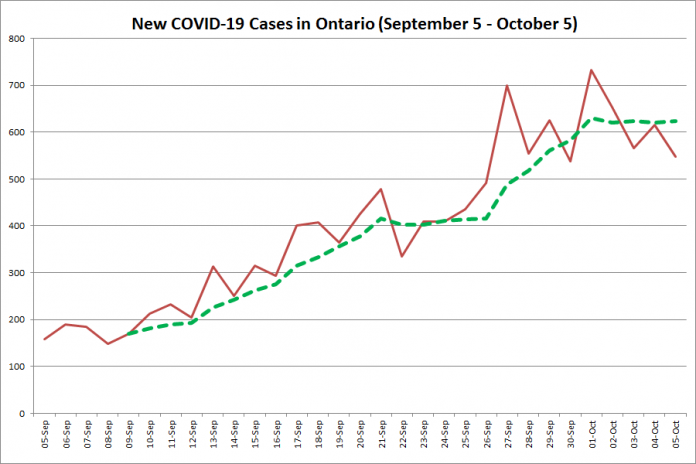
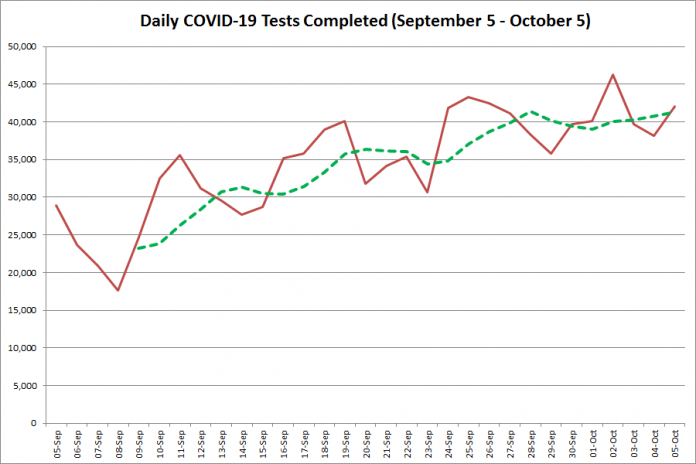
For more information about COVID-19 in Ontario, visit covid-19.ontario.ca.




















